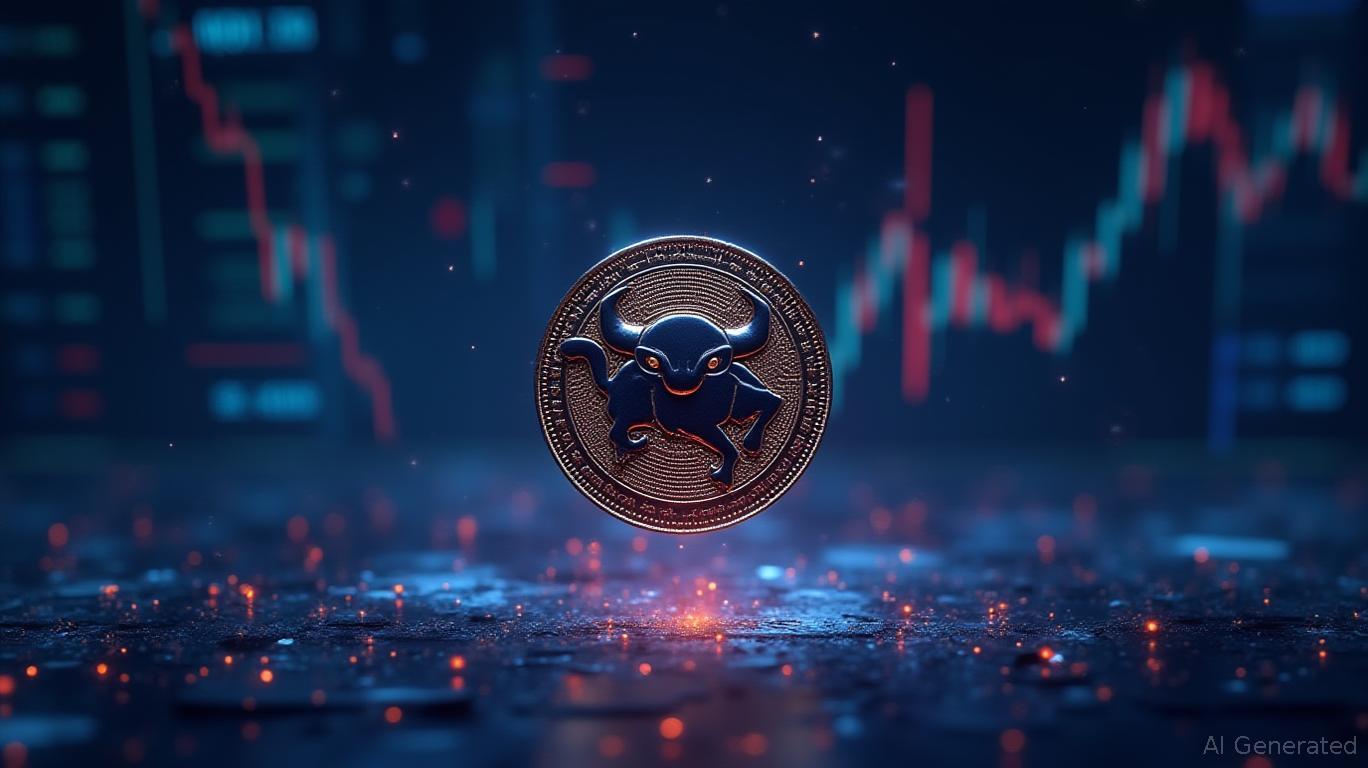China's Stablecoin Restrictions: Authorities Balance Technological Progress with Economic Security
- China's regulators halt mainland firms' stablecoin projects in Hong Kong to address financial stability risks. - Global stablecoin usage expands beyond crypto trading, but high fees persist, with USDT dominating the market. - Kyrgyzstan launches KGST stablecoin and plans a CBDC to boost international settlements and digital currency adoption. - Experts note China's regulatory actions aim to balance innovation with risk management, maintaining competitiveness against the U.S.
Chinese authorities have intensified their oversight of stablecoin projects in Hong Kong, with the People's Bank of China (PBOC) reportedly instructing mainland companies to halt their stablecoin launches in the city. This action, which targets both banks and non-bank payment providers, highlights growing apprehension over the dangers posed by unregulated digital currencies, especially as global stablecoin usage accelerates, according to
The South China Morning Post also reported that the PBOC and the Cyberspace Administration of China have told firms like Ant Group and JD.com to suspend their stablecoin initiatives. This move comes as Hong Kong has become a significant hub for digital assets since 2022, fostering a relatively open environment for the industry. Now, regulators are aiming to slow the rapid expansion of stablecoins and real-world asset (RWA) tokenization, citing worries about financial stability and the movement of capital across borders.
![]
Worldwide, stablecoins are increasingly being used for payments beyond crypto trading, though transaction costs remain a significant hurdle. Recent
Elsewhere, Kyrgyzstan has introduced its own stablecoin, KGST, which is pegged to the som at a 1:1 ratio, in partnership with Binance founder Changpeng Zhao. The country also revealed a three-stage plan to test a Central Bank Digital Currency (CBDC), beginning with internal transfers and eventually including offline payments, according to
Industry analysts believe that China's regulatory measures in Hong Kong do not indicate a withdrawal from digital assets as a whole. Despite the current pause, China continues to compete with the United States in the digital asset arena, with officials reaffirming their commitment to long-term strategic objectives, as noted by the South China Morning Post. The PBOC's actions reflect an effort to balance encouraging innovation with mitigating risks in a fast-changing sector. As stablecoins and CBDCs become more prevalent worldwide, regulators must find ways to maintain financial stability while supporting technological advancement.
Disclaimer: The content of this article solely reflects the author's opinion and does not represent the platform in any capacity. This article is not intended to serve as a reference for making investment decisions.
You may also like
XRP News Today: MoonBull's Organized Presale Confronts AVAX/XRP Price Swings Amid Changing Investor Focus
- U.S.-China trade truce delays tariffs and rare earth export curbs, stabilizing tech/defense supply chains but leaving 2020 pact compliance at 58%. - MoonBull ($MOBU) surges as structured meme coin presale with 100x potential, contrasting AVAX/XRP's 31-5.56% October declines amid regulatory uncertainty. - Snowflake (SNOW) reports 32% YoY revenue growth to $1.1B in Q2 2026 but remains 39% below 2021 peak despite AI infrastructure momentum. - MoonBull's 23-stage presale model with 95% APY staking and govern

Ethereum Updates Today: Ethereum Shifts Focus to Institutional Investors: The Blockchain’s Emerging Financial Foundation
- Ethereum Foundation launches institutions.ethereum.org to promote blockchain as a secure financial infrastructure for traditional firms. - Portal highlights Ethereum's 10-year uptime, L2 scalability, and privacy tools like ZK proofs, supporting 75% of tokenized RWAs and 60% of stablecoins. - Upcoming Fusaka upgrade (Dec) will triple block gas limit to 150M, reducing L2 costs and congestion for DeFi/stablecoin growth. - BlackRock, Visa, and eToro leverage Ethereum for tokenized assets, while 3.2M ETH corp

Ethereum Updates Today: Institutional Interest Fuels ConsenSys' Blockchain Public Offering
- ConsenSys, co-founded by Ethereum's Joseph Lubin, plans an IPO led by JPMorgan and Goldman Sachs, marking a major public debut for Ethereum infrastructure. - The firm's MetaMask wallet and Linea Layer 2 network aim to enhance Ethereum scalability, while its $200M ETH deployment with SharpLink optimizes onchain yields via staking. - The IPO aligns with growing institutional adoption of blockchain, as crypto firms seek regulatory clarity and integrate DeFi protocols into traditional finance systems. - Shar

Ethereum News Update: Ethereum Connects Digital Assets with Traditional Finance as Institutional Holdings Surpass Bitcoin
- Institutional Ethereum treasuries now exceed Bitcoin's corporate holdings, with 3.2M ETH (0.40%) vs. 0.36% of BTC, signaling shifting adoption priorities. - BitMine's $13.2B ETH accumulation and Ethereum Foundation's institutional portal highlight growing confidence in PoS efficiency and DeFi infrastructure. - U.S.-China trade deal boosts ETH to $4,049 while regulatory risks (SEC classification) and concentration risks (BitMine's 2.8% stake) remain key challenges. - Ethereum's $3,900 support and projecte
